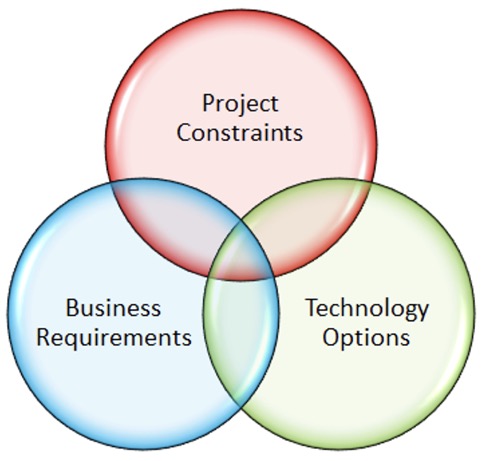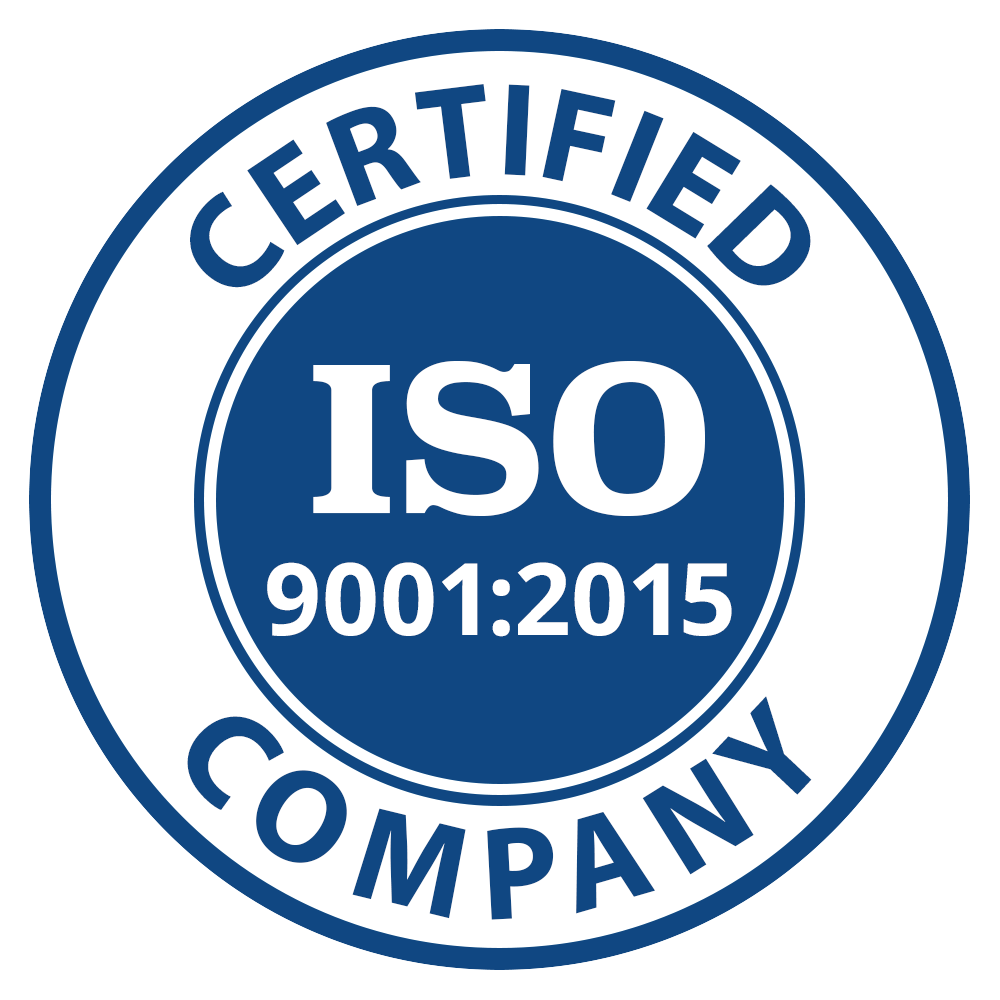Application/Solution Architecture
 By: Marwan Abu-Fadel 10/19/2016
By: Marwan Abu-Fadel 10/19/2016Federal Agencies Office of Chief Information Office (OCIO) should invest in an enterprise IT Application/Solutions Architecture team to help define the business requirements (what must be delivered to provide value), project constraints (such as funding, resources, and time), and available technology options.
Solutions Architecture identifies the optimal solution in the overlap between Project Constraints, Business Requirements, and Technology Options and bridges the design gap between business needs and what technology has to offer within the enterprise solutions within the OCIO.

The Solutions Architecture team supports Application Development efforts undertaken by the OCIO on behalf of department Program Offices. Solutions Architecture addresses specific IT problems and requirements through the design of information systems or application solutions and ensures that the system solution fits within the enterprise context.
SAs translate business requirements into a solution architecture and design that will become the blueprint for the solution being developed. That solution is based on the SA’s knowledge of various technologies, platforms, and software products; previous successful designs that the Solutions Architects have been involved with; reference architecture; and Enterprise Architecture guidance. SAs balance specific solution needs and concerns with enterprise needs and strategies, and ensure that the solution aligns with the roadmap established by the Enterprise Architecture.
SAs apply their expertise in the Software Development Lifecycle (SDLC) and enterprise IT strategy to play a leadership role in the application development process.
SAs also define and follow a common set of practices, principles, and templates for designing IT applications. Through the standardizing of application core designs, applications can maintain a similar look and feel, leverage common functionality, and provide enhanced security. Standard components can also be reused, which reduces time needed for development as well as testing and rework.
Solution Architects (SA) should play a pivotal role within the Office of the Chief Information Officer (OCIO) Integrated Project Team (IPT). This ensures that they can actively collaborate with project stakeholders, offering expert guidance at every stage of the project—from its initiation to its successful deployment. Their involvement guarantees alignment with the CIO’s Enterprise Architecture roadmap and adherence to security protocols. By leveraging enterprise solutions available to the agency, they contribute to reducing project costs. Furthermore, SAs facilitate the inheritance of NIST controls and the Authorization to Operate (ATO) from the enterprise solutions employed, optimizing project outcomes and efficiency.

The Solutions Architecture team supports Application Development efforts undertaken by the OCIO on behalf of department Program Offices. Solutions Architecture addresses specific IT problems and requirements through the design of information systems or application solutions and ensures that the system solution fits within the enterprise context.
Why:
- Solutions Architects (SAs) have the skills and experience to:
- Transform business requirements into a set of architectural and design documents to guide solution development;
- Manage the Software Development Lifecycle (SDLC) and to control costs and the quality of solution deliverables;
- Identify risks and risk mitigation strategies;
- Perform alternative analysis of solutions;
- Match available and appropriate technologies to the problem being solved, in order to produce an optimal solution;
- Ensure compliance of solutions with Enterprise Architectures as well as Agency IT strategies and policies.
How:
SAs translate business requirements into a solution architecture and design that will become the blueprint for the solution being developed. That solution is based on the SA’s knowledge of various technologies, platforms, and software products; previous successful designs that the Solutions Architects have been involved with; reference architecture; and Enterprise Architecture guidance. SAs balance specific solution needs and concerns with enterprise needs and strategies, and ensure that the solution aligns with the roadmap established by the Enterprise Architecture.
SAs apply their expertise in the Software Development Lifecycle (SDLC) and enterprise IT strategy to play a leadership role in the application development process.
SAs also define and follow a common set of practices, principles, and templates for designing IT applications. Through the standardizing of application core designs, applications can maintain a similar look and feel, leverage common functionality, and provide enhanced security. Standard components can also be reused, which reduces time needed for development as well as testing and rework.
When:
Solution Architects (SA) should play a pivotal role within the Office of the Chief Information Officer (OCIO) Integrated Project Team (IPT). This ensures that they can actively collaborate with project stakeholders, offering expert guidance at every stage of the project—from its initiation to its successful deployment. Their involvement guarantees alignment with the CIO’s Enterprise Architecture roadmap and adherence to security protocols. By leveraging enterprise solutions available to the agency, they contribute to reducing project costs. Furthermore, SAs facilitate the inheritance of NIST controls and the Authorization to Operate (ATO) from the enterprise solutions employed, optimizing project outcomes and efficiency.


